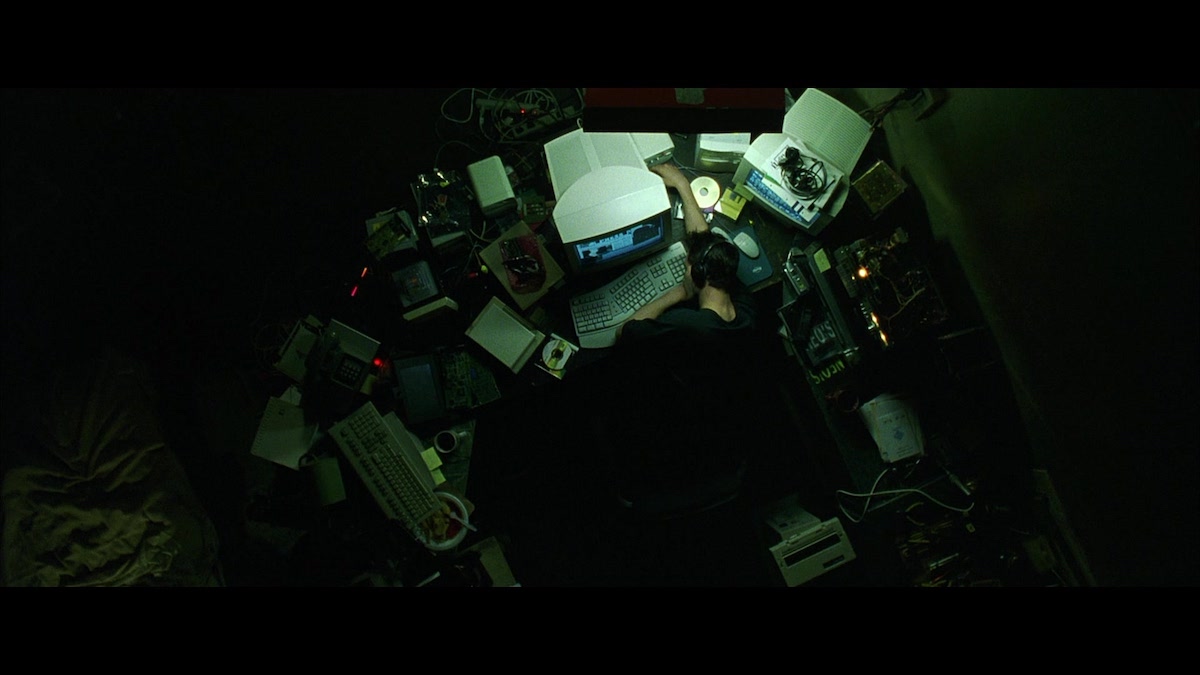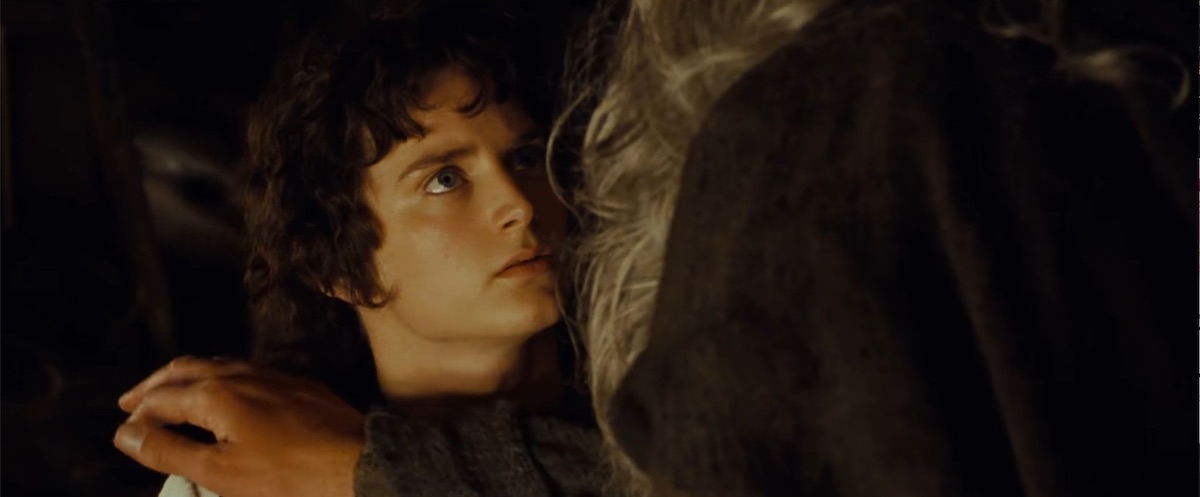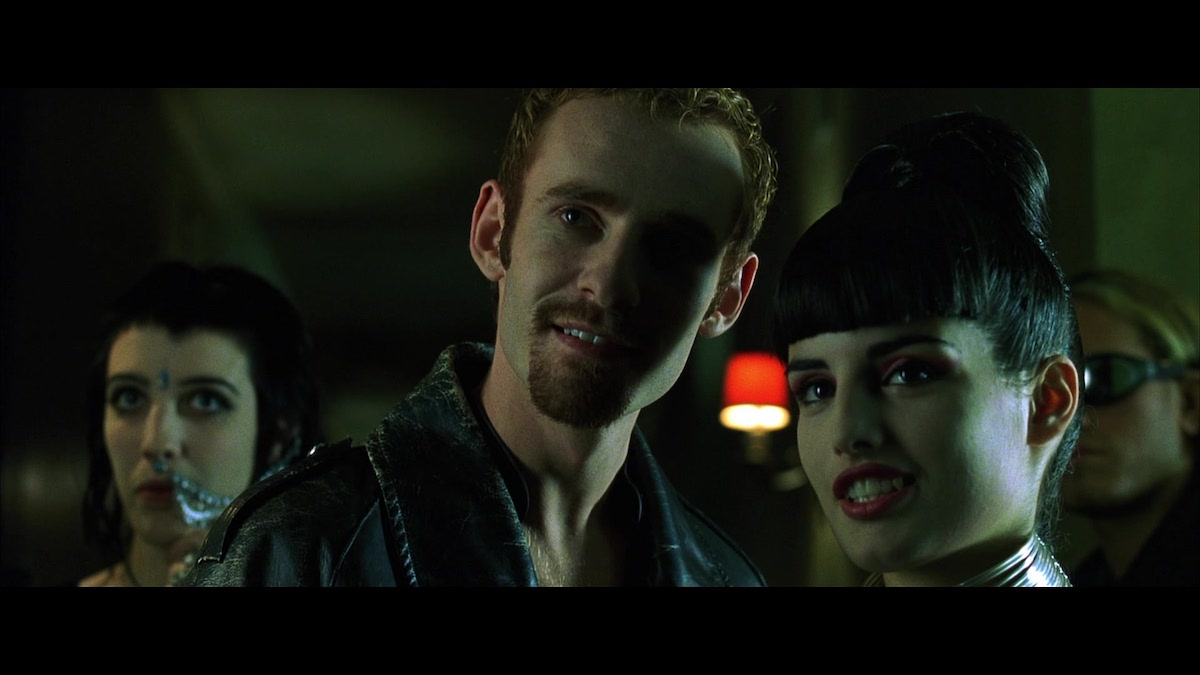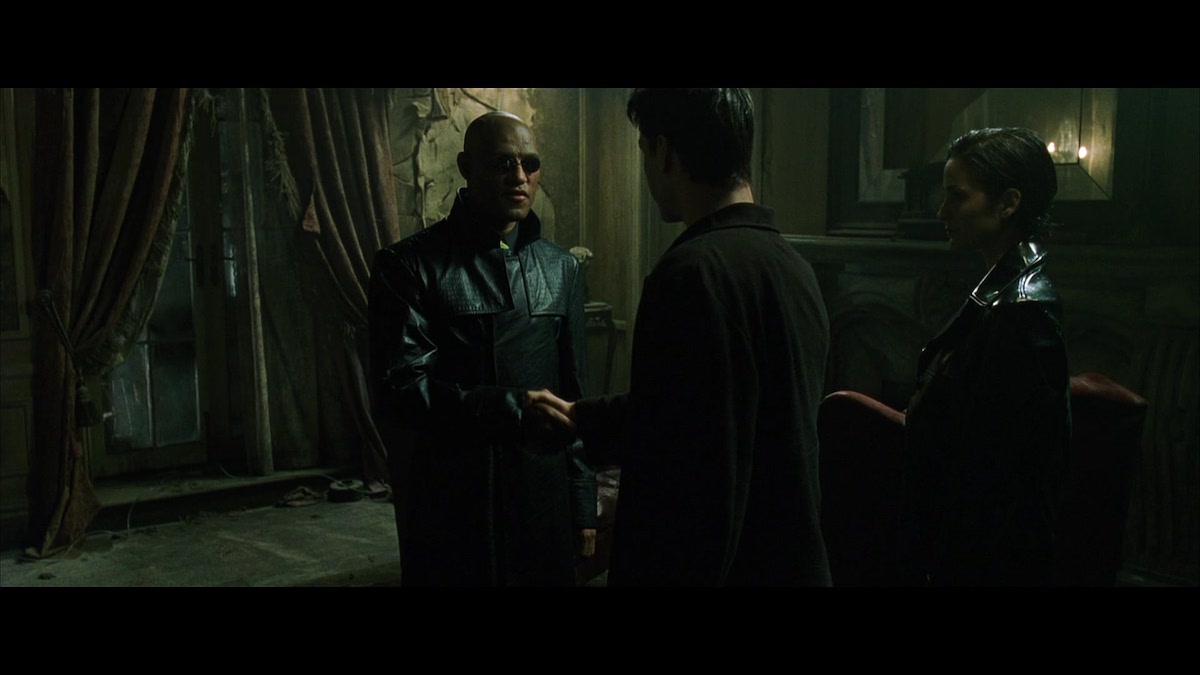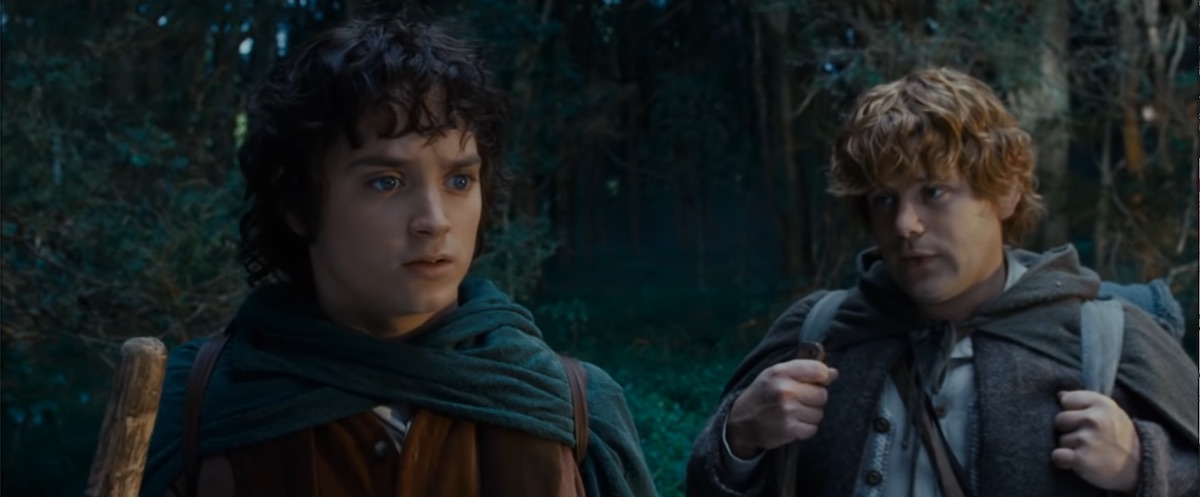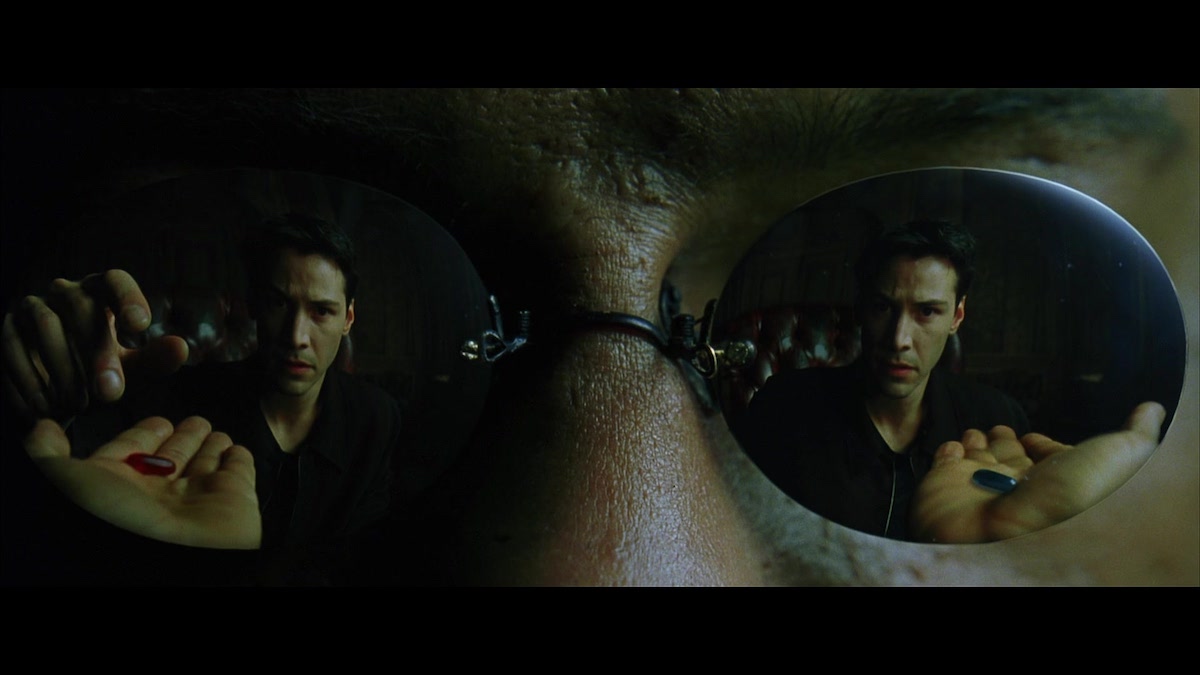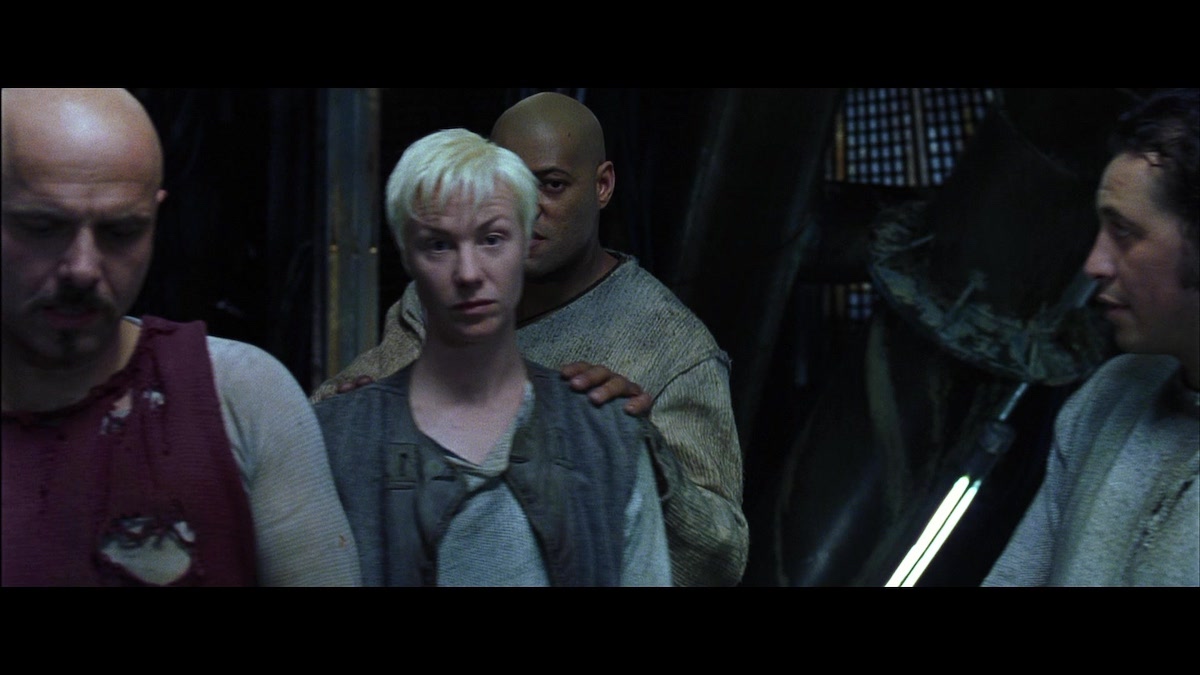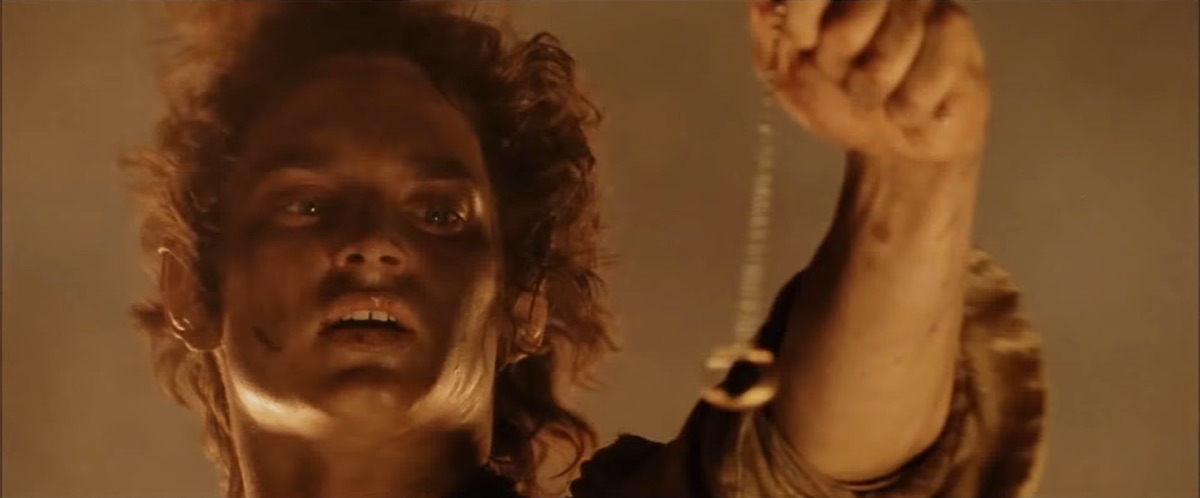Spellbrand Blog
A Hero’s Journey To Your Brand

In today’s post, I reveal a powerful brand strategy pillar and marketing technique that experts use to create sizzling sales letters and ultra-persuasive blog posts. This concept is rooted in human psychology and brand archetypes, which makes it amazingly effective. You’ll learn:
• How to use the hero’s journey to get customers to convert
• Why the Hero’s Journey is such a powerful framework
• How stories can lead to sales
• How to translate the Hero’s Journey into the Audiences’ Journey
Ready to learn more? Let’s get started.
What is the Hero’s Journey?
 You may have noticed that most stories follow a pattern. Indeed, there is a unifying aspect inherent to our stories that lend certain predictability. This isn’t by accident. Entertainment, in particular, is susceptible to this rather formulaic patterning. The reason, in short, is what’s known as the Hero’s Journey.
You may have noticed that most stories follow a pattern. Indeed, there is a unifying aspect inherent to our stories that lend certain predictability. This isn’t by accident. Entertainment, in particular, is susceptible to this rather formulaic patterning. The reason, in short, is what’s known as the Hero’s Journey.
The Hero’s Journey is a story structure first described by Joseph Campbell in 1949. It’s an example of an archetype. You can think of it as a mold into which a writer fits their plot, characters, and setting. By sticking to this structure, the writer stands a better chance of hooking the reader. Why? Well, because the Hero’s Journey codifies features of the story shared by much of classic literature. Pretty much all of our myths, legends, and cultural stories use this format.
You may see, then, how it could be useful to you as a business owner. If your own messaging follows a pattern that customers are very familiar with, it stands to reason that they may be more receptive to said messaging. This is, of course, true. What’s more, you can use the steps of the Hero’s Journey to think about and visualize your customer’s journey, too.
The Hero’s Journey unfolds over three acts. These are:
• The Departure Act. In this first act, the hero leaves the comfort and familiarity of the Ordinary World.
• The Initiation Act. The hero moves out of the Ordinary World into the world of the unknown. They are taken out of their comfort zone, usually against their will. This new world is known as the Special World.
• The Return Act. In this final act, the hero beats the odds and returns home in triumph.
For a quick example, recall the book The Hobbit, by J.R.R Tolkien. In the Hobbit, Bilbo is enjoying his ordinary life until a powerful wizard, Gandalf, intervenes. Before he knows it, Bilbo is well out of his comfort zone. Eventually, though, he overcomes the obstacles set before him and returns home to the Shire in triumph.
This three-act structure a very broad view of the Hero’s Journey, so let’s drill down a bit more.
If you would like to see a video of this article – check out this link.
How to Use This Guide
You can apply the Hero’s Journey to marketing materials in one of two ways:
• Linearly. Create stories, case studies, and other materials using the steps of the Hero’s Journey in order. Through this process, you end up with powerful marketing assets. Even better, you can use this formula over and over.
• Non-linearly. Pick and choose from among the steps as you see fit.
Both approaches are valid, but if you’re just starting out, we recommend a linear approach. This will keep things nice and simple as you learn the ropes. You can use the linear approach to craft branded, customer-oriented:
• Blog posts
• Video scripts
• Case studies
• Internal customer biographies
• Infographics
• Social media marketing posts
To gain an even deeper understanding of the Hero’s Journey and how that plays into building a robust brand that takes you from the Red Ocean into the Blue Ocean, I strongly recommend reading the series on brand archetypes.
What then, are the precise steps of the Hero’s Journey? Read on to find out.
#1 The Ordinary World
As mentioned, this is the hero’s home. It’s wherever they feel comfortable. They are, at the beginning of the story, in their comfort zone. Here we can observe the main character in their environment. We get to understand them before something comes along to disrupt things. This allows us, as the audience, to relate to them.
Watch a video of this first step – click this link.
How This Relates to Audience
As you build your brand, you’ll likely create several buyer personas. Considering where your customer feels most comfortable is an important part of that process. This will provide a launching point for your messaging. After all, if your customer has no problem to solve, then you have no service to provide them. Their ordinary world is your starting place. Your audience may have limited awareness of the problem that your brand could solve.
Action Step
Create several buyer personas. Then choose one to base this piece of marketing material on. This way, you have an anchor for your audience’s journey. To do this, you must first identify your customer’s ordinary world. Work out how the audience perceives the problem that your brand solves.
Storytelling
 The Hero’s journey can be seen in almost all stories and most films. For the sake of this post, we will take the example of the film The Lord Of The Rings to discuss the various steps and how they are incorporated into film narratives.
The Hero’s journey can be seen in almost all stories and most films. For the sake of this post, we will take the example of the film The Lord Of The Rings to discuss the various steps and how they are incorporated into film narratives.
For the first step – the ordinary world, Frodo lives comfortably in the Shire. The film shows Frodo reading a book under some trees and smoking a pipe looking very contended. Of course, the ordinary world is not always rosy.
In Star Wars, for example, Luke lives on Tattoine but is not happy or satisfied. He feels the lack of something and he longs to go out into space.
In The Matrix, Neo is living the life of a computer hacker but is restless and is looking for something – although he does not know what he is looking for. His ordinary world can be seen from the intro scene in the movie as he is sprawled across his desk sleeping while a search progresses on the computer screen.
Brand Spotlight
Apple has always focused on its most loyal customers. But recently they engaged in some pretty intensive market research to reach a new segment: business professionals. Their focus in this segment was on professionals who wanted stylish tools that would help them work more efficiently. Many of their recent advertisements are focused on this demographic, and these ads really display the power of a focused buyer persona.
#2 The Call to Adventure
The Call to Adventure, also known as the inciting incident, is the main event that gets the story rolling. It’s the critical moment in any story. In a movie, it usually occurs within the first 10-15 minutes. In a novel, it’s usually within the first 30 pages. The Call to Adventure disrupts the main character’s life. It alerts them to impending challenges.
If you would like to see a video of this article – check out this link.
How This Relates to Audience
You can think of the Call to Adventure is the moment your customer realizes they have a problem that they need to solve. It’s an essential part of your customer’s journey. You’ll need to consider it carefully when constructing buyer personas. Your audience now has increased awareness of the problem. They are in an uneasy and uncomfortable stage.
Action Step
Write a paragraph or two that describes the problem your customer wants to solve. First, write this for yourself, in your own words. This is so that you are clear on what your product is doing for the target customer. Then, if you intend to include this step, write a customer-facing version that focuses on the customer’s pain points.
Storytelling
 IN LOTR, the call to adventure comes in the form of Gandalf who comes to the Shire and pulls Frodo into a plot that threatens the world. He calls on Frodo to keep the evil ring safe till he returns and then, later on, asks him to take the ring out of the Shire.
IN LOTR, the call to adventure comes in the form of Gandalf who comes to the Shire and pulls Frodo into a plot that threatens the world. He calls on Frodo to keep the evil ring safe till he returns and then, later on, asks him to take the ring out of the Shire.
In Starwars, R2D2 delivers a holographic message to Luke – to seek out Obiwan and ask him to help Princess Leia and the resistance.
The call to adventure can happen many times in the course of a Hero’s Journey. It could be made of multiple calls to mini-adventures and one call to the big ultimate adventure.
In The Matrix, of the several calls to adventure, Neo gets the first call to a mini adventure in the form of Trinity sending a message on his screen and waking him up. Trinity asks Neo to follow the rabbit. Later Trinity ask him to meet with Morpheus to find out the answers to all his questions.
Brand Spotlight
 MySpace was long ago edged out by its more robust and modern competitor Facebook, but the company made a comeback after a bit of rebranding. They focused on customer problems they could address and hit upon a good idea: offer musicians a platform they could use to promote their work. The site redesign featured robust musician-promoting features like a “Listen Now” call to action, interactive cover art, and musician profiles.
MySpace was long ago edged out by its more robust and modern competitor Facebook, but the company made a comeback after a bit of rebranding. They focused on customer problems they could address and hit upon a good idea: offer musicians a platform they could use to promote their work. The site redesign featured robust musician-promoting features like a “Listen Now” call to action, interactive cover art, and musician profiles.
#3 The Refusal
In most stories, the hero will initially reject the call to adventure. Typically, they do so because of insecurity. The character will have to address this insecurity later on. But there’s another way to think of this phase of the story. The hero is not willing to accept that something is challenging the safety offered by the ordinary world.
If you would like to see a video of this article – check out this link.
How This Relates to Audience
Your audience in this stage realizes they may have to change or move from their current comfort zone and will come up with reasons not to change. This is motivated by fear and as I mentioned in the Fear is a business killer video, it is a powerful emotion and this is what prevents a lot of people from seeking out effective solutions. This manifests as customer objections.
Often, your brand messaging will need to address several customer objections. Sometimes, these objections stem from resentment. Say, for instance, that you sell replacement lawn mower blades. Your customer may be frustrated that their existing blade dulled very quickly. You can anticipate at least one of this customer’s objections. Simply remind them that your blades last four times longer than those of your competition—assuming, of course, that such a claim is true.
Action Step
Create a list of at least five customer objections. Try to focus on objections that stem from customer resentment. It’s good practice to think of the shortcomings of your competitor’s offering. How is your product better? How do you stand out? The more you can differentiate your offer, and the earlier in the journey you do so, the better.
Storytelling
 In LOTR, Frodo is very hesitant to go on a journey with the ring in his safekeeping. In fact, Frodo is not happy about the journey throughout the film. He feels that a simple Hobbit-like himself cannot save the world and can not go on an adventure.
In LOTR, Frodo is very hesitant to go on a journey with the ring in his safekeeping. In fact, Frodo is not happy about the journey throughout the film. He feels that a simple Hobbit-like himself cannot save the world and can not go on an adventure.
In Star Wars, when Luke delivers the message to Obi-Wan and is asked to go to Alderaan, he refuses. He feels he can not help the resistance and is not great enough to save the galaxy.
As with the call to adventure, the refusal can also be multiple times throughout the journey.
In the Matrix, Neo’s first refusal comes when receives a FedEx package that contains a phone. The phone rings and when he answers it, Neo hears the voice of Morpheus who tells him that he should listen carefully and follow his instructions if he wants to stay safe. Morpheus then guides Neo to an exit in the building and then asks him to jump off the window ledge. Neo refuses this.
Brand Spotlight
 ZipCar is an urban car rental solution with a twist: the cars are left in parking spaces around town by other users. Anyone with a ZipCar membership can reserve any given car for a few hours at a time. Then they just drop the car off in a designated space when they’re done. But customers were initially skeptical of the premise.
ZipCar is an urban car rental solution with a twist: the cars are left in parking spaces around town by other users. Anyone with a ZipCar membership can reserve any given car for a few hours at a time. Then they just drop the car off in a designated space when they’re done. But customers were initially skeptical of the premise.
The company did a good job of addressing customer objections, of which there were many. Most notably, customers were concerned about car cleanliness, car availability and late fees. The company works hard to proactively address these objections by prioritizing customer service and cleanliness standards.
#4 Meeting a Mentor
At some point in the first third of the story, the main character meets a mentor. This character is often older, and he or she teaches the protagonist many things. From the mentor, the main character gains:
• Confidence
• Insight
• Advice
• Training
Most stories feature a mentor because the main character is unable to face the challenges posed by the Special World without aid. Note that, often, the mentor character drops out of the story. This is because, otherwise, the main character has little reason to stretch their wings.
Watch a video of this first step – click this link.
How This Relates to Audience
Your brand needs to address customer objections and this can be done in the form of a mentor or guide. Your brand must play the role of the mentor and provide your audience information to combat the objections. This is not a sales process. It is not about trying to unduly convince your audience. There is not selling involved here. Your brand simply has to play the role of the guide and provide information. Your brand has to help your audience.
After you address the potential customer’s first objection, it’s a good idea to introduce them to a few early testimonials. These testimonials serve a similar function to that of the mentor character. They give your customers confidence in your product or service. In so doing, consumers move closer to solving their problems.
An alternative is to consider your brand as the mentor or guide and introduce yourselves to your customer’s journey towards solving their problem and offer them advice and education in dealing with the problems that relate to your product or service specialty.
Action Step
Gather a few testimonials that focus on any of the following:
• Customers who converted early in the sales process because of high initial confidence in your product or service
• Customers who bought from you based on the strength of your brand
Customers who went on to become brand ambassadors
Alternatively, build up your brand authority so that your target audience seeks you out to deal with and solve their problems.
Storytelling
 In LOTR, Gandalf fills the role of the mentor and advice and motivates Frodo to keep on the arduous journey. He also introduces Frodo to the Fellowship of The Ring.
In LOTR, Gandalf fills the role of the mentor and advice and motivates Frodo to keep on the arduous journey. He also introduces Frodo to the Fellowship of The Ring.
In Star Wars, Luke has two mentors. In the first film, it is Obi-Wan who gives Luke his father’s lightsaber and offers to train him. In the second film, Luke meets Yoda who is his ultimate mentor.
In the Matrix, Neo meets his mentor and guide, Morpheus – first as a voice and then directly. Morpheus introduces Neo to the possibility of getting answers to all his questions. He also guides Neo throughout the movie.
Brand Spotlight
 HubSpot is a master of the well-placed testimonial. The company combines case study excerpts with testimonials for a powerful one-two punch that gets the point across. This combination is results-focused and provides powerful social proof. They are also masters of the authority game. In fact, at one point HubSpot was the go-to for anything related to inbound marketing through their content and academy.
HubSpot is a master of the well-placed testimonial. The company combines case study excerpts with testimonials for a powerful one-two punch that gets the point across. This combination is results-focused and provides powerful social proof. They are also masters of the authority game. In fact, at one point HubSpot was the go-to for anything related to inbound marketing through their content and academy.
#5 Crossing the Threshold
At this stage, the character crosses the point of no return. They set out on their journey. This part of the story raises the stakes and provides some action.
Watch a video of this first step – click this link.
How This Relates to Audience
In this stage, your audience will commit to the change in their minds. Your role as the mentor will enable your audience to understand the importance of solving their problem and they are now committed to change their status quo. This again is not a sales step and does not involve any sales. They are not committing to buy your product or service. They are committed to finding a solution.
In your messaging, it’s important to encourage your audience to imagine using your product or service. This can nudge them in the creative direction you want them to go in, after all. Once you’ve exposed them to a few testimonials, hit them with some evocative copy to really get them to imagine what using your product would be like.
Action Step
Consult all the data you’ve gathered so far. Then create some provocative copy that takes the customer on a mental journey. Focus on strong mental images. Remember that, during this journey, you need to take the prospect from skeptic to confident customer—if only in their imaginations for now. Use phrases like imagine if, what if, and consider that. Phrases like these provoke curiosity, and curiosity is extremely powerful.
But stay away from why don’t you? type setups. At this juncture, you want to use phrasing like this:
• What if you could get on your mower at any time and know that its blade was as good as it was on day one?
Instead of this…
• Why don’t you step up to a blade that lasts four times longer?
At this juncture, you want to propel the lead forward, not send them careening backward. Asking them questions that start with the word ‘why’ will cause them to feel defensive, and they’ll go back to step three, The Refusal. Not what you want.
Storytelling
 In LOTR, Frodo and the Fellowship begin the second part of Frodo’s journey towards Mount Doom. Frodo’s fate is sealed and he has gone past the point of no return. Now the safety of the entire World is tied to his journey.
In LOTR, Frodo and the Fellowship begin the second part of Frodo’s journey towards Mount Doom. Frodo’s fate is sealed and he has gone past the point of no return. Now the safety of the entire World is tied to his journey.
In Star Wars, when Luke’s foster parents are killed he leaves his home planet of Tattoine in the Millennium Falcon with the help of Han Solo and Chewbacca. This sets him on a path of adventure, danger, and heroism.
In the Matrix, Morpheus offers Neo a red pill and a blue pill. He says that if Neo takes the red pill, he will start the journey to get answers to questions that have been plaguing him. If he takes the blue pill he can go back to his life and continue as he was. Neo takes the red pill and crosses the threshold – a point of no return.
Brand Spotlight
Persuasive copy is an art form. One way to quickly learn how to create copy is to get on a lot of mailing lists. We suggest creating a special email account for this so you don’t get bogged down by a ton of promotional emails. There are several companies who are well worth learning from. One of these is online retailer UrbanDaddy. The company does a lot of things right when it comes to copy, and email copy in particular. Their emails are engaging, funny and informative. Their emails do away with the fluff that plagues most email marketing materials. They don’t use long intros or preambles. This saves the customer time, which the customer appreciates. Next, they use fun, powerful and evocative language to paint a picture.
#6 Tests, Allies & Enemies
This step makes up a large chunk of the story and is very important. This is the part of the story in which the hero encounters both internal and external struggles. In a screenplay, Tests, Allies & Enemies make up a large part of act two. You can also think of it as most of the Initiation Act, using the three-part structure we outlined above.
This is the part of the story in which the hero uses the information, training, or advice provided by the mentor character. In The Hobbit, this is where Bilbo has adventures with murderous goblins, mischievous dwarfs, and a nasty cave-dwelling monster.
Watch a video of this first step – click this link.
How This Relates to Audience
Think back to step four, Meeting a Mentor. What did your first testimonials teach your customer about your product? What is it about those early testimonials that give them more confidence in your product, brand, or company? Or think about that content that you have provided to the potential customer to educate and help them navigate the problem. How can you create more content that aligns with the various emotions of the audience?
This stage is the first step in your sales process. In this stage, you can start talking about your product or service and making recommendations. At this stage, your audience may be introduced to a demo of your product or a trial of your service. This stage also prompts more objections from the audience.
Action Step
Think of tests, allies, and enemies as objections. Identify new objections that were not addressed by the first testimonials you provided. Now identify testimonials from your collection that address these new objections. Place these testimonials into the content you’re creating. Or identify topics and problems that are either directly related to the problem your product or service tries to solve or peripheral issues that form part of your audience’s world-view. Create more content to help the audience further along the journey.
Storytelling
 In LOTR, strong bonds are formed between Frodo and the Fellowship and they face new dangers and enemies along the way including the Ring Wraiths, the Balrog, and more.
In LOTR, strong bonds are formed between Frodo and the Fellowship and they face new dangers and enemies along the way including the Ring Wraiths, the Balrog, and more.
In Star Wars, Luke meets Han Solo and Chewbacca, and others who align with him throughout the journey. Luke gets his first glimpse of the enemy.
In the Matrix, when Neo wakes from his sleep in the giant incubator controlled by the machines and comes aboard the ship, he meets his allies – Chip, Trinity, Cypher, Tank, Dozer etc. Later he also meets the enemies -the sentinels and the agents. He begins his training.
Brand Spotlight
 Zendesk is very adept at showing off their customer testimonials. The layout of their site is a good study, as it’s very easy to read. There’s plenty of white space between testimonials and each features an eye-catching graphic. What’s more, the company features testimonials from their biggest clients first. This lends social proof. For instance, you’ll always find testimonials from big players like Airbnb and Vimeo listed first. Alternatively, take a look at brands like HubSpot or HelpScount whose blogs are full of valuable content that really help people in a huge way. HelpScout creates superb content that helps increase productivity and they really understand their audience’s journey.
Zendesk is very adept at showing off their customer testimonials. The layout of their site is a good study, as it’s very easy to read. There’s plenty of white space between testimonials and each features an eye-catching graphic. What’s more, the company features testimonials from their biggest clients first. This lends social proof. For instance, you’ll always find testimonials from big players like Airbnb and Vimeo listed first. Alternatively, take a look at brands like HubSpot or HelpScount whose blogs are full of valuable content that really help people in a huge way. HelpScout creates superb content that helps increase productivity and they really understand their audience’s journey.
#7 Approaching the Inmost Cave
In this stage, the hero makes preparations to deal with the story’s primary conflict. In The Hobbit, this is the phase of the story in which Bilbo learns about the dragon Smaug. In the story, this manifests as a literal cave beneath a mountain. Needless to say, a story need not be this literal.
Important: The first step of this phase is a setback. The hero fails at some important task and must spend some time regrouping and thinking. There are several moments like this in The Hobbit, most notably when Bilbo quarrels with the goblins.
The Inmost Cave is all about facing the unknown. There is something within the metaphorical cave that poses an extreme threat to the protagonist. In most stories, the hero ultimately overcomes this obstacle despite long odds.
Watch a video of this first step – click this link.
How This Relates to Audience
It’s at this point in the audience’s journey that you will address their primary pain point. A pain point is a problem that your customer is experiencing that they would like to resolve. Your product helps them solve that problem. This is, naturally, why they will want to do business with you. This can be a heavy sales step. You actively prompt your audience to try your product or service. You relate the pain point directly to your service or product. Your prompt your audience to get ready for the big change.
So at this point in your copy, blog post, or case study, focus on the main pain point that your product addresses.
Action Step
There are many ways to identify pain points:
• Review your various customer bios/personas
• Survey your existing customers and ask them why they chose your product
• Scan your testimonials for problems your customers were looking to solve
• Look at your online reviews
• Look at what your competitor’s offer
• Consult with your sales team
To identify the main point, look for patterns. What comes up again and again in these various data sources? This is likely to be the primary problem that your customer is looking to solve. Once you identify it, paint a picture. Use evocative copy that illustrates how using your product or service will resolve that particular problem.
Storytelling
 In LOTR, Frodo experiences the corruptive power of the Ring and he decides to split from the Fellowship and go on the journey along with Sam as his partner. The innermost cave is the temptation that Frodo sees in others and also in himself.
In LOTR, Frodo experiences the corruptive power of the Ring and he decides to split from the Fellowship and go on the journey along with Sam as his partner. The innermost cave is the temptation that Frodo sees in others and also in himself.
In Star Wars, Luke enters the innermost cave when he hears that planet Alderaan has been destroyed by the Death Star. Luke, along with Han Solo and Chewbacca infiltrates the Death Star to rescue Princess Leia. Here Luke enters the cave literally as well as metaphorically.
In the Matrix, Neo has a talk with the Oracle who tells him that he is not the chosen one. Neo then doubts himself. After that Morpheus sacrifices himself to save Neo and is caught by the agents. Neo enters his deepest innermost cave and decides to sacrifice himself to save Morpheus – even though the Oracle told him he was not the chosen one.
Brand Spotlight
When Ray Kroc founded McDonald’s, he did so with the notion that people wanted to buy the same food for the same price no matter where in the country they were. This intuition served him well. His forward thinking allowed him to address a pain point that many Americans at the time had. It was hard to get a reliable, affordable meal when on vacation. This made it difficult to plan a trip in advance. McDonald’s solved this problem with its innovative assembly line food prep methodology.
#8 The Ordeal
The ordeal is the pivotal part of the hero’s journey. It’s the final uphill moment. After this, things get easier for the hero. So this marks the final confrontation with the primary antagonist. In The Hobbit, this is Bilbo’s confrontation with the dragon Smaug and his subsequent escape.
In this stage, the hero also uses lessons they learned from their mentor. In The Hobbit, Gandalf teaches Bilbo quite a bit about confidence. Bilbo uses these lessons to summon the courage to deal with the ferocious dragon.
How This Relates to Audience
The Ordeal is a pivotal step in your customer’s journey. Think of it this way: they must overcome their own resistance in order to buy from you. You can help them do that. In the previous step, you illustrated to your prospect how your product solves their main problem. Here, you’ll anticipate their biggest objection. Recall that, in step six, you identified several objections. Here you use formal sales techniques such as offers, discounts, or showing value to bring the audience to the buying decision. The audience would go through an ordeal trying to make up their mind on whom to buy from.
Action Step
List out all the objections you identified in step six. Which of these is the biggest objection? There are several ways to find out:
• Consider the context. You know your product—and your customer—better than anyone else. So which of these is likely to be the archetype for their biggest objection? Lack of need, lack of budget, lack of trust, or lack of urgency? Only you can answer this, so put some time into it.
• Identify patterns. Here again, you want to identify objections that come up often. Surveys are useful for this. For instance, you may find that I don’t want to be locked into a contract, we’re already working with another vendor or this money is allocated elsewhere in the budget come up again and again. Narrow it down until you’ve determined which of these comes up most often.
• Ask. When you do surveys, ask customers if they considered your competitors. If so, ask them why they decided not to go with them. This usually reveals a significant objection that your competitor was unable to address.
Once you’ve narrowed things down to a single objection, craft some copy that elegantly counters this objection.
Storytelling
 In LOTR, Frodo is lured by Gollum into Shelob’s layer where he nearly dies. Sam saves Frodo from certain death.
In LOTR, Frodo is lured by Gollum into Shelob’s layer where he nearly dies. Sam saves Frodo from certain death.
In Star Wars, Luke sees Darth Vader kill Obi-Wan. This pains Luke tremendously as Obi-Wan had become a father figure to him. His jubilation of recusing Princess Leia is overshadowed by this ordeal.
In the Matrix, Neo enters the building where Morpheus is being held by the agents with the help of Trinity to rescue him. An epic battle ensues and Neo is injured.
Brand Spotlight
Acquired by Amazon in 2009, online retailer Zappos is one of the better online retailer success stories. But in order to gain customer trust, they had to squash several customer objections. When the company was founded, online shopping was still somewhat new. And the idea of buying shoes online? Strange indeed. But the company addressed customer concerns with stellar customer service. They authorized their phone representatives to solve customer problems at pretty much any cost, and that gave them a stellar reputation they came to enjoy.
#9 Reward
At this stage, the hero has overcome The Ordeal and has acquired their reward. In The Hobbit, Bilbo returns to the Shire after having gone on a rewarding adventure. This was one of his ambitions when he was a much younger hobbit, but he lost touch with this fact. The adventure he went on put him back in touch with his intrigue for the wider world. He also acquired some treasures he could pass down to an heirloom.
How This Relates to Audience
When crafting your narrative, prompt your prospect to envision what it will be like when he’s acquired your product or service. Your messaging should align with the emotions that your audience would feel as they use your product or service and solve their problem.
Action Step
To do this, put yourself in their place and try to feel how they would feel when they’ve used your product to resolve their problem. A few emotions they’re likely to feel are:
• Relief
• Satisfaction
• Certainty
• Completion
• Joy
• Expansiveness
Next, write a descriptive summary of how they’ll feel when they buy your product or service. The idea here, as usual, is to use evocative language. Paint a picture.
Storytelling
 In LOTR, Frodo gets pulled into the power of the Ring and feels like this is his reward and wants to possess the Ring. He no longer wants to destroy the Ring in Mount Doom.
In LOTR, Frodo gets pulled into the power of the Ring and feels like this is his reward and wants to possess the Ring. He no longer wants to destroy the Ring in Mount Doom.
In Star Wars, decides to destroy the Death Star and Darth Vader by joining the resistance. He feels this is his reward for the ordeal of losing Obi-Wan.
In the Matrix, Neo and Trinity to get the better if the agents and rescue Morpheus.
Brand Spotlight
When customers buy Nike sneakers, they’re buying a status symbol. Granted, Nike isn’t exactly luxury-level footwear anymore, with some modern brands costing upwards of $500. But the company set itself apart in the early days being a brand that serious athletes wanted to wear. When folks buy Nike, they feel good. Wearing Nike footwear broadcasts to others that the wearer has good taste. How does your product reward customers?
#10 The Road Back, The Resurrection & The Return
In this last step, we’ll compress the last three phases of the hero journey into one. This is because, frankly, they’re quite similar in purpose and scope. They also happen to be left out of many stories and aren’t considered essential.
The Road Back
The hero begins the journey back to their Ordinary World after defeating the primary antagonist.
The Resurrection
While on the way home, the hero encounters a final challenge that tests them based on everything they’ve learned. This is sometimes called a double climax. This is fairly minor in The Hobbit. But it is present. In The Hobbit, when Bilbo returns home, he finds many of his relatives rooting through his things. They had assumed him dead and were squabbling over his belongings. With Bilbo’s new-found confidence, he has no trouble dealing with them.
The Return
This is the ultimate return to the Original World and is usually the last page of a novel. It signals that all storylines have been resolved.
How This Relates to Audience
Once a prospect buys from you, don’t simply end your brand narrative with a simple “Thank you!” page. Continue to nurture them through follow up emails, personal notes, helpful advice on using the product or service, reach out to request a testimonial or send them information on how to contact you in case they have an issue with your product or service or are otherwise unhappy. This signals to the customer that you appreciate their business. It will lead to customer loyalty.
Action Step
Always craft a well thought out product or service delivery process before going live. Neglecting this step can make you appear ungrateful and unprofessional. If in doubt, consult with another entrepreneur or business owner who has more experience than you. Or look for strong examples online.
Storytelling
 In LOTR, Frodo overcomes the corruption of the Ring while Gollum succumbs to it and jumps after it into Mount Doom. Sauron is destroyed when the Ring is destroyed and Frodo is reunited with Sam and the Fellowship. Frodo leaves Middle Earth and decides to go live with the Elves.
In LOTR, Frodo overcomes the corruption of the Ring while Gollum succumbs to it and jumps after it into Mount Doom. Sauron is destroyed when the Ring is destroyed and Frodo is reunited with Sam and the Fellowship. Frodo leaves Middle Earth and decides to go live with the Elves.
In Star Wars, Luke refuses Han Solo’s offer to leave and continues with his mission to help the rebels. He connects with Obi-Wan through the Force and uses it to destroy the Death Star. Luke, Han Solo, and Chewbacca are given medals for their bravery. Luke begins the long process of becoming a true Jedi.
In the Matrix, Neo has a final battle with Agent Smith and other agents and dies. He is resurrected by Trinity’s kiss and he is reborn in the Matrix. Neo realizes his power and stops bullets. He destroys the agents. He then gives an ultimatum to the machines and flies through the sky like Superman.
Brand Spotlight
I find the onboarding and after-sales process of Superhuman (email client) to be awesome. Even after a year or more of using the service, I am surprised by how human and personal the emails from their CEO are. Even normal feature update emails have a sense of fun and service and always put a smile on my face.
Summary of The Action Steps
In this final section, we’ll briefly recap each action step to build a clearer picture. Remember, you can use this process in two ways:
• Linearly. Follow each action step in order to make a persuasive blog post, sales letter or other marketing assets.
• Non-linearly. Pick and choose from each action step to create something unique. The results will still be solid as long as you follow the advice in this post.
Action Step #1
Create several buyer personas.
Action Step #2
Write a paragraph or two that summarizes the problem your customer is facing. Do not include this in your marketing asset. Then create a short customer-facing introduction that highlights the problem and that assures them that there is an affordable solution.
Action Step #3
Create a list of at least five customer objections. Keep this list internal.
Action Step #4
Go through your testimonials. Find a few that feature customers who converted early, who bought based on the strength of your brand or who became brand ambassadors. Insert these into your marketing asset. Or create a robust content strategy to establish yourself as an authority in your space.
Action Step #5
Create copy, using data that you gathered in the previous steps, that paints a vivid mental picture. This copy should entice the reader. It should take them on a mental journey from skeptic to believer. This makes up the bulk of your sales letter, blog post, etc.
Action Step #6
Look through your remaining testimonials. Identify new objections that were not addressed by the testimonials you’ve included so far. Add these testimonials to your content.
Action Step #7
Identify your ideal customer’s main pain point. Add some copy that addresses this point.
Action Step #8
Identify your ideal customer’s biggest objection. Write an evocative copy that addresses it. Make sure that this copy also addresses the objections raised in step six.
Action Step #9
Create some copy that focuses on how good your customer will feel once they solve their problem with your product.
Action Step #10
Create a well thought out product or service delivery process.
There you have it. Follow these steps and you can create a powerful sales process. Even better, the cadence of this sales process is based on the rhythm of our earliest cultural stories. Powerful stuff.
(Header Illustration Source)

Mash Bonigala
Creative Director & Brand Strategist
With 25+ years of building brands all around the world, Mash brings a keen insight and strategic thought process to the science of brand building. He has created brand strategies and competitive positioning stories that translate into powerful and stunning visual identities for all sizes of companies.
Featured Work
See Our Work in Action
Real brands, real results. Explore how we've helped businesses transform their identity.
Client Love
What Our Clients Say
Don't just take our word for it. Hear from the brands we've worked with.
Gracienne Myers
Banana Vital
"If you are looking for a company to design your company’s identity or even rebrand your current brand, Spellbrand is the company that you would choose, they designed my company, Banana Vital’s logo, and provided me with 6 design to choose from which made it hard to choose because they were all very good. Just recently I hired them to rebrand Mechanical Bull Sales and again every logo was great and well thought out. I am very pleased with the work that Spellbrand has provided and I am looking for to continue working with them."
Tom McGee
PD Campus
"We tried several designers to design our logo and could not find the one that fit our company. After a few years of searching for a good branding company, I found Spellbrand through a random search. Spellbrand was sensational! They took the time to listen to our story and created a few designs that spoke to our team and what we do. We've never had a designer do that. We not only received a great logo, but we now have a brand we are all proud to wear! Thank you!"
Keep Reading
Related Articles
Nov 19, 2025
What Do You Need To Start An Online Business
Discover the essential elements needed to start a successful online business. From branding and website design to capital and self-discipline, learn what it takes to launch and grow your digital venture.
Read MoreNov 19, 2025
What are paths and anchor points in Adobe Illustrator?
Master the fundamentals of paths and anchor points in Adobe Illustrator. Learn how these essential tools work together to create professional logo designs and vector graphics.
Read MoreNov 17, 2025
Use Of Color In Creating Logo Designs
Master the psychology of color in logo design. Learn how colors influence perception, build brand recognition, and create emotional connections with your audience.
Read More

